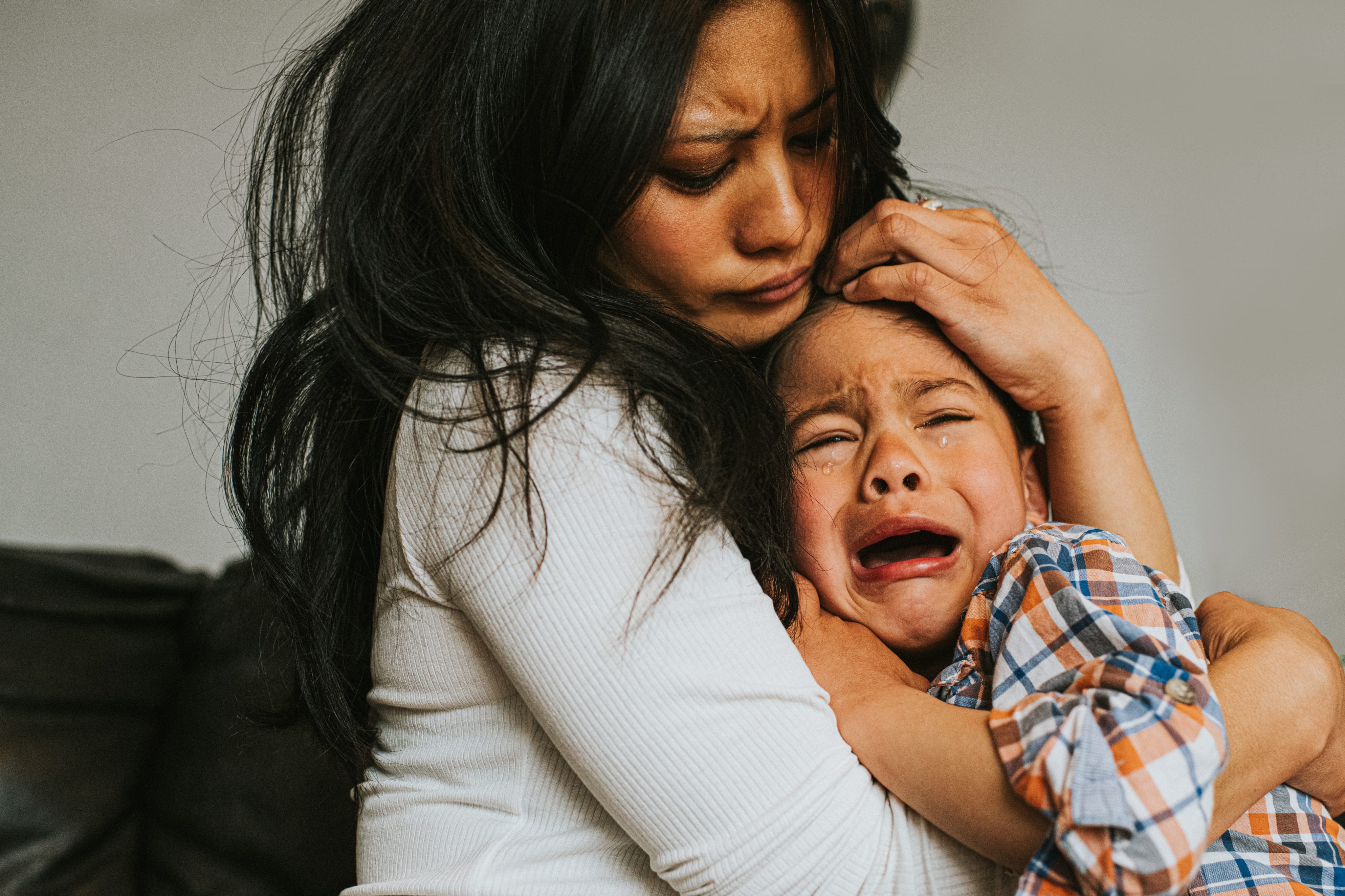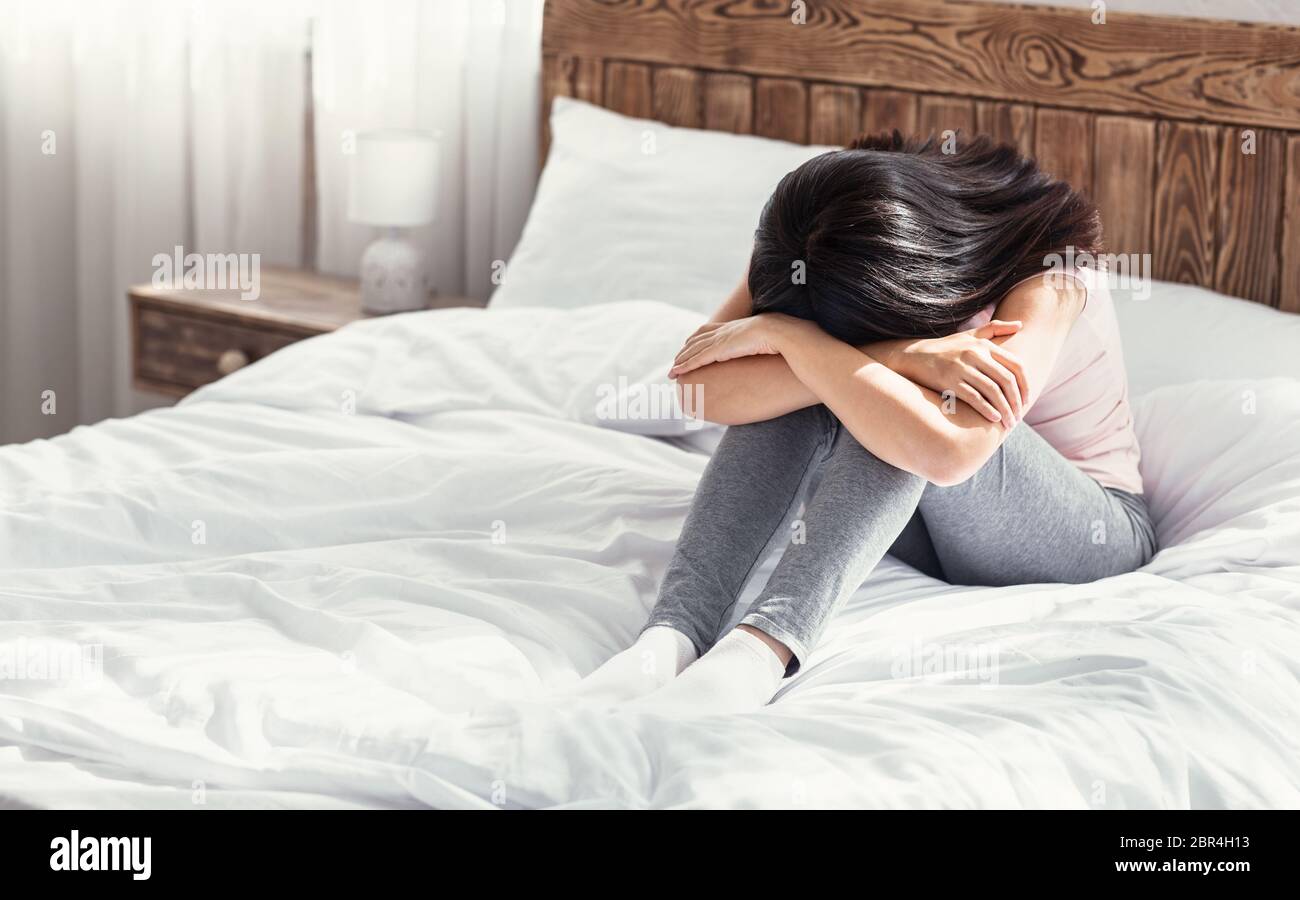Emotional States and Triggers

Crying alone on the bedroom floor is a deeply personal experience that can be triggered by a wide range of emotions. While it’s often associated with sadness, the underlying emotional state can be complex and multifaceted.
Emotional States
The emotional state of someone crying alone on the bedroom floor can vary significantly. While sadness is a common emotion, other feelings might be present, including:
- Overwhelm: A feeling of being completely consumed by emotions, unable to cope with the intensity of the situation.
- Hopelessness: A belief that things will never get better, leading to feelings of despair and resignation.
- Loneliness: A sense of isolation and disconnection, feeling alone in their struggle.
- Shame: Feeling embarrassed or ashamed of their emotions or the situation causing them distress.
- Anger: Suppressed anger or frustration that might manifest as tears.
- Fear: Anxiety or worry about the future or the consequences of their current situation.
Triggers
Triggers are events or situations that can evoke strong emotional responses, potentially leading to tears. These triggers can be personal, situational, or environmental:
- Personal Triggers: These are often linked to past experiences, unresolved issues, or deep-seated insecurities. Examples include:
- Past trauma: Recalling a traumatic event or experiencing a similar situation can trigger intense emotional reactions.
- Relationship issues: Conflicts with loved ones, breakups, or the loss of a significant relationship can lead to feelings of sadness and despair.
- Personal failures: Experiencing setbacks or feeling like they’re not meeting their own expectations can trigger feelings of inadequacy and self-doubt.
- Situational Triggers: These are external events or circumstances that can create stress and overwhelm:
- Financial stress: Financial difficulties, job loss, or debt can create anxiety and feelings of hopelessness.
- Health concerns: Experiencing a personal illness or the illness of a loved one can trigger feelings of fear and vulnerability.
- Life transitions: Major life changes, such as moving, starting a new job, or becoming a parent, can create stress and emotional instability.
- Environmental Triggers: These are external factors that can affect mood and emotional well-being:
- Weather: Rainy or gloomy weather can often evoke feelings of sadness and melancholy.
- Music: Listening to sad or nostalgic music can trigger emotional responses, particularly if it’s associated with a specific memory or experience.
- Smells: Certain scents can evoke powerful memories and emotions, sometimes leading to tears.
Common Thought Patterns
The thoughts that accompany crying alone on the bedroom floor can be characterized by:
- Negative Self-Talk: Focusing on negative aspects of oneself, their abilities, or their situation. This can include self-criticism, self-blame, and feelings of worthlessness.
- Catastrophizing: Exaggerating the severity of the situation or its potential consequences, leading to feelings of fear and helplessness.
- Rumination: Continuously dwelling on negative thoughts and experiences, replaying them in their mind and preventing emotional processing and resolution.
- All-or-Nothing Thinking: Viewing situations in extreme terms, either completely good or completely bad, without acknowledging the possibility of shades of gray.
Psychological and Social Implications: Crying All Alone On The Bedroom Floor

The experience of crying alone on the bedroom floor can be deeply isolating and emotionally draining. This experience can have significant psychological and social implications, impacting an individual’s mental health and well-being. Understanding these implications is crucial for recognizing the importance of seeking support and fostering healthy coping mechanisms.
The Impact of Isolation on Mental Health, Crying all alone on the bedroom floor
The feeling of isolation during a breakdown can exacerbate existing mental health issues and contribute to the development of new ones. The lack of social connection and support can intensify feelings of loneliness, despair, and worthlessness. This isolation can create a vicious cycle, where the individual withdraws further from social interaction, perpetuating their feelings of isolation.
- Increased risk of depression and anxiety: Studies have shown a strong correlation between social isolation and increased risk of developing depression and anxiety disorders. The lack of social support can make it harder for individuals to cope with stress and negative emotions, leading to a decline in mental well-being.
- Impaired cognitive function: Isolation can negatively impact cognitive function, leading to difficulties with concentration, memory, and decision-making. This can further hinder an individual’s ability to manage their emotions and seek help.
- Weakened immune system: Social isolation has been linked to a weakened immune system, making individuals more susceptible to physical illnesses. The stress and lack of support can disrupt the body’s natural defenses, leaving individuals more vulnerable to infections and other health problems.
Societal Expectations and Emotional Expression
Societal expectations and norms can significantly influence how individuals express their emotions. These norms often dictate that expressing vulnerability and negative emotions, such as crying, is seen as a sign of weakness or failure. This pressure to suppress emotions can lead to internalized shame and difficulty seeking support when needed.
“The stigma surrounding mental health can make it difficult for individuals to seek help when they need it. Fear of judgment or social isolation can prevent people from opening up about their struggles.”
- Gender roles: Traditional gender roles can influence how men and women are expected to express their emotions. Men are often socialized to suppress their emotions and be stoic, while women are expected to be more emotionally expressive. These expectations can create barriers to emotional expression for both genders.
- Cultural influences: Cultural norms and values can also shape emotional expression. Some cultures may encourage open and direct expression of emotions, while others may emphasize emotional restraint and stoicism. These differences can impact how individuals cope with emotional distress and seek support.
Coping Mechanisms and Support Systems

It’s crucial to understand that experiencing emotional distress is a normal part of life. However, it’s essential to develop healthy coping mechanisms and seek support when needed. This section will explore various ways to navigate challenging emotions and access resources that can help.
Healthy Coping Mechanisms
Developing healthy coping mechanisms is vital for managing emotional distress. These strategies can help you regulate your emotions, reduce stress, and improve your overall well-being.
- Mindfulness and Meditation: Engaging in mindfulness practices, such as meditation, can help you become more aware of your thoughts and feelings without judgment. This can reduce stress and promote emotional regulation.
- Physical Activity: Exercise has been proven to have a positive impact on mental health. Engaging in regular physical activity releases endorphins, which have mood-boosting effects. It can also help reduce stress and anxiety.
- Creative Expression: Engaging in creative activities, such as painting, writing, or music, can be a therapeutic outlet for expressing emotions. It allows you to process difficult feelings and find a sense of release.
- Social Connection: Connecting with loved ones and maintaining strong social relationships can provide emotional support and a sense of belonging. Spending time with friends and family can help you feel less isolated and improve your mood.
- Seeking Professional Help: If you’re struggling to cope with emotional distress, seeking professional help from a therapist or counselor can be incredibly beneficial. They can provide guidance, support, and tools to help you navigate your challenges.
Support Systems
There are numerous resources and support systems available for individuals facing emotional challenges. These resources can provide a lifeline and offer guidance, support, and a sense of community.
- Mental Health Professionals: Therapists, counselors, and psychiatrists specialize in mental health and can provide individual therapy, group therapy, and medication management. They offer a safe and confidential space to explore your emotions and develop coping strategies.
- Support Groups: Joining a support group for people facing similar challenges can provide a sense of community and validation. Sharing experiences and learning from others can be incredibly helpful in navigating difficult emotions.
- Online Resources: There are numerous online resources available, such as mental health websites, forums, and apps. These resources can provide information, support, and tools for managing emotional distress.
- Crisis Hotlines: If you’re experiencing a mental health crisis, there are crisis hotlines available 24/7. These hotlines provide immediate support and can connect you with emergency services if needed.
- Family and Friends: Reaching out to trusted family members and friends for support can be incredibly helpful. They can provide a listening ear, offer emotional support, and help you access resources if needed.
Professional Help: Benefits and Types
Seeking professional help from a mental health professional can be a transformative experience. It offers a structured and personalized approach to addressing emotional challenges.
| Type of Professional | Benefits |
|---|---|
| Psychotherapist | Provides therapy sessions to help individuals understand and manage their emotions, thoughts, and behaviors. They use various therapeutic approaches, such as cognitive behavioral therapy (CBT) or psychodynamic therapy, to address specific issues. |
| Psychiatrist | Medical doctors specializing in mental health. They can diagnose and treat mental illnesses, prescribe medication, and provide therapy. |
| Counselor | Provides guidance and support for individuals facing personal or professional challenges. They can help with relationship issues, career decisions, and life transitions. |
| Social Worker | Focuses on the social and environmental factors impacting mental health. They can connect individuals with resources and support systems within their community. |
Yo, sometimes it’s rough, you know? Like, you’re crying all alone on the bedroom floor, and it feels like the walls are closing in. If you’ve got a big room, maybe you should check out how to make a big bedroom look smaller , it could help you feel more cozy and less alone.
Maybe a smaller room would make it feel like there’s someone else there with you, even if it’s just a lamp or a blanket.
Yo, sometimes life throws you a curveball and you just end up crying your eyes out on the bedroom floor. But hey, at least you got a place to do it, right? If your room is a total mess though, maybe it’s time to get organized.
Check out this small storage cabinet for bedroom to help you tidy up and create a space where you can chill and feel better, even when you’re feeling down. Then, when you’re ready to face the world again, you’ll be feeling fresh and ready to rock!
